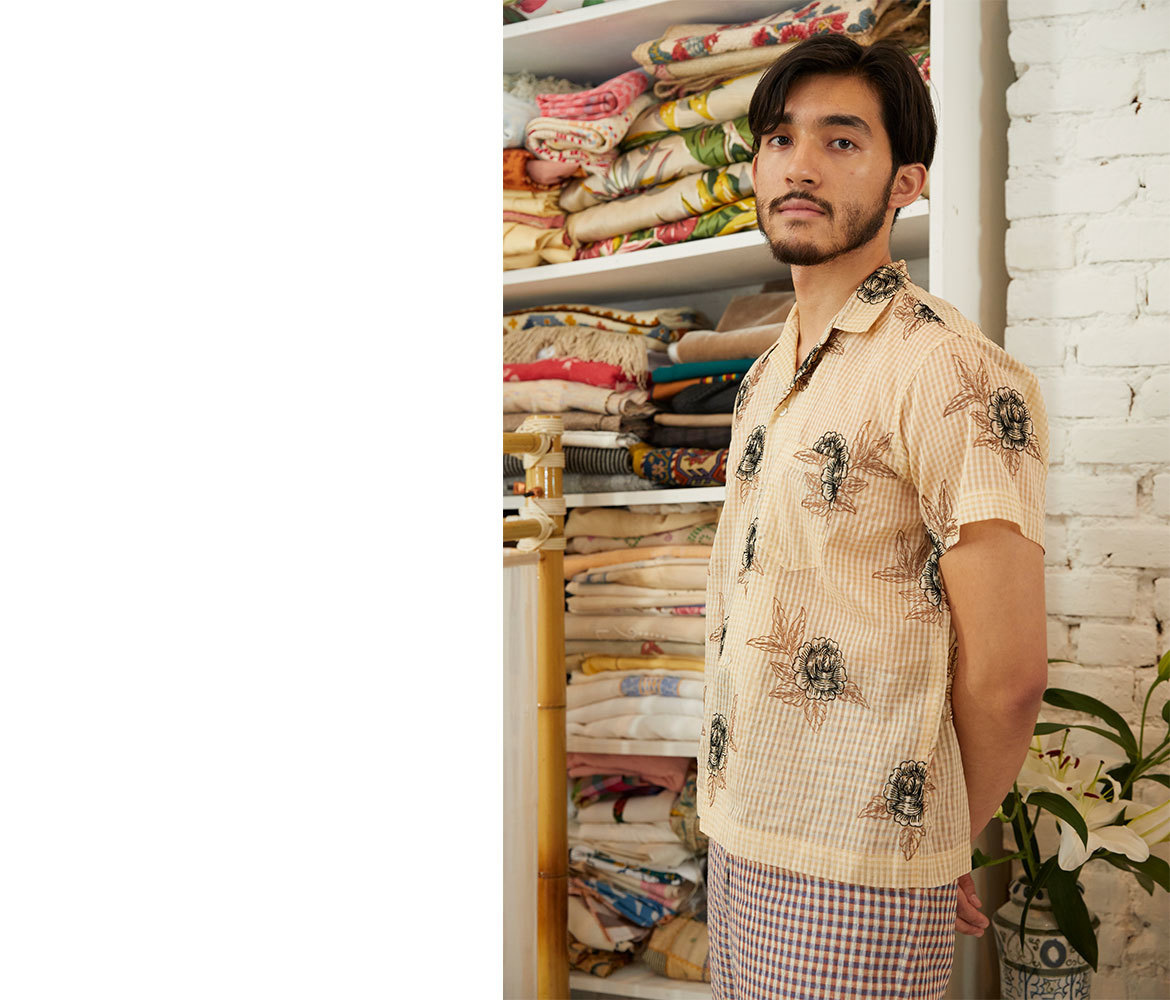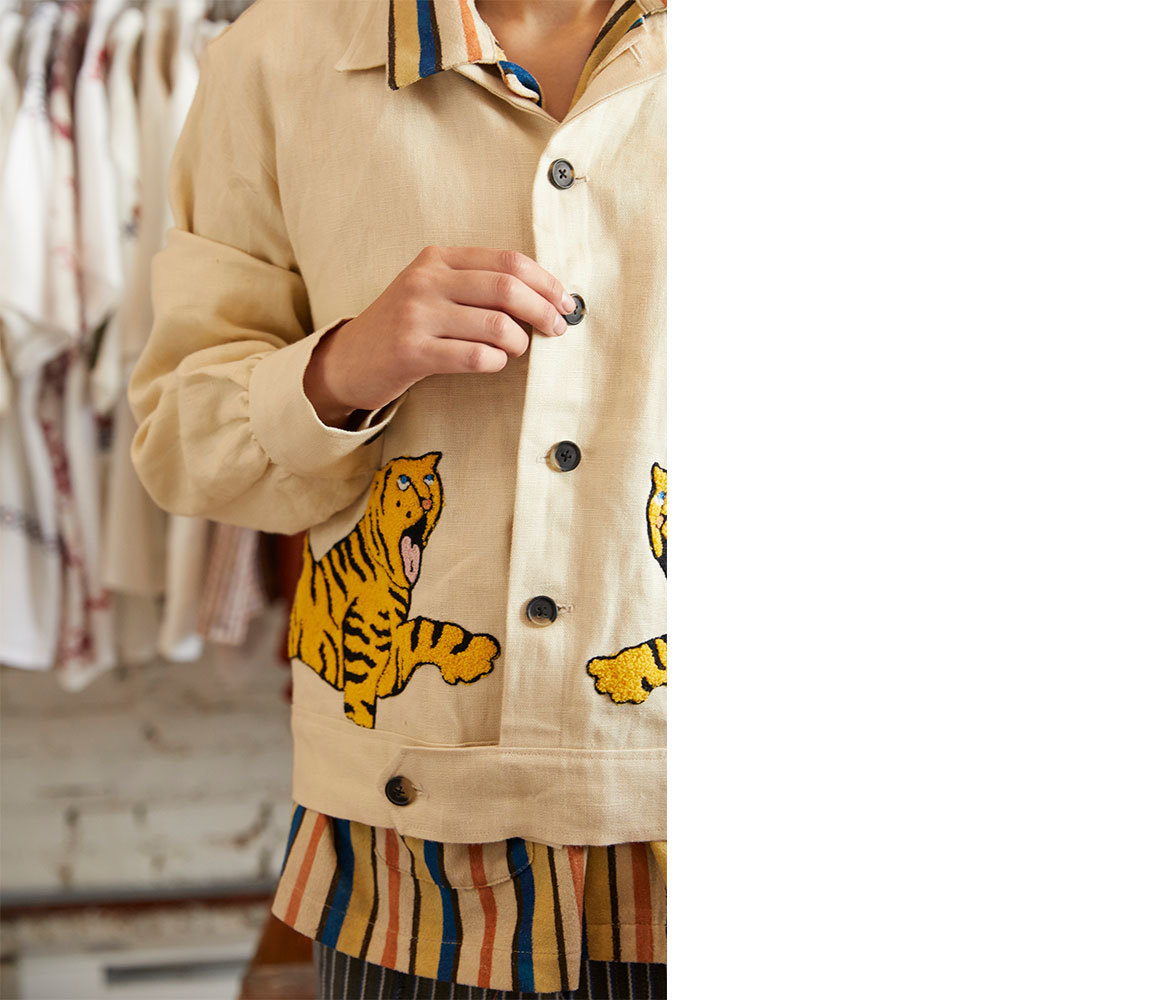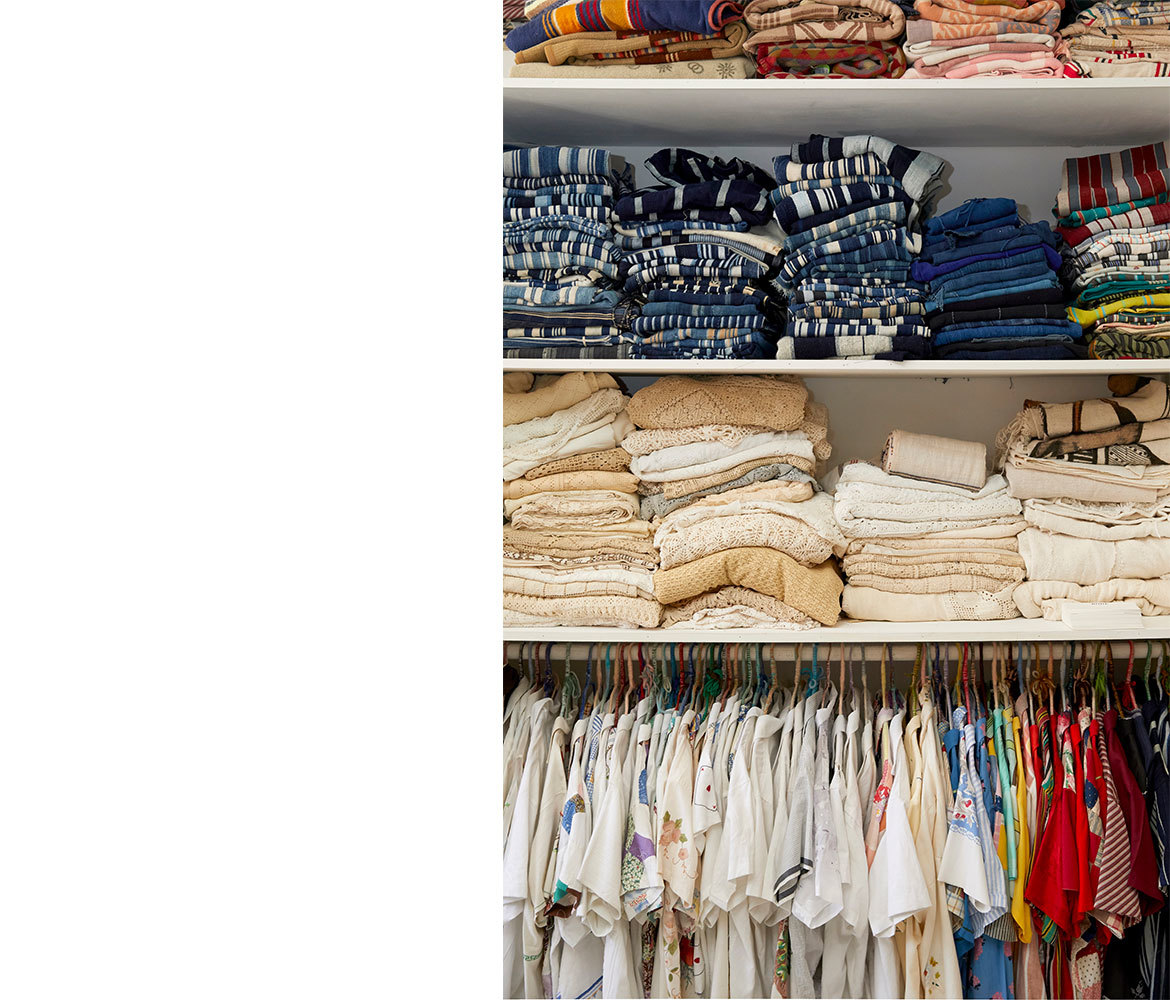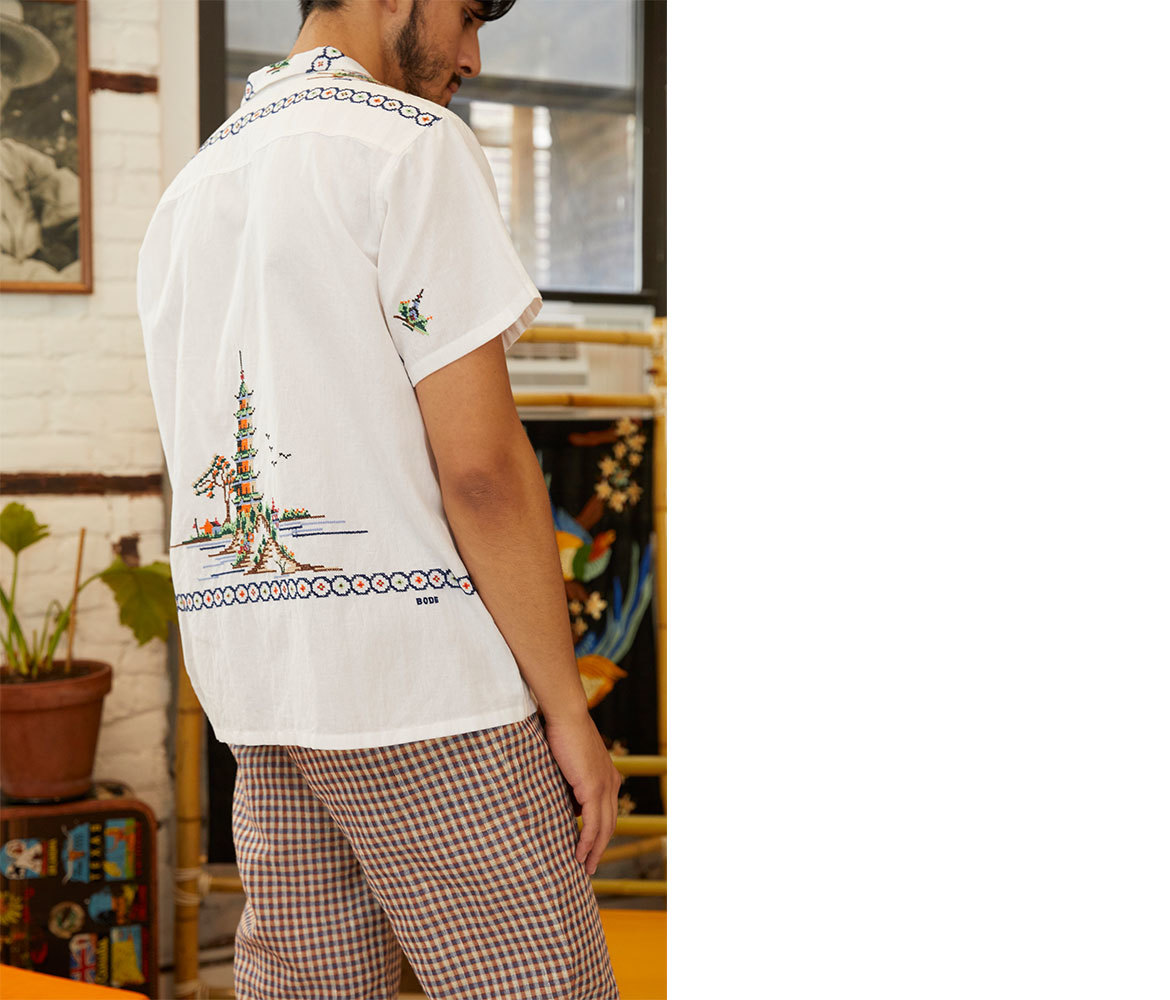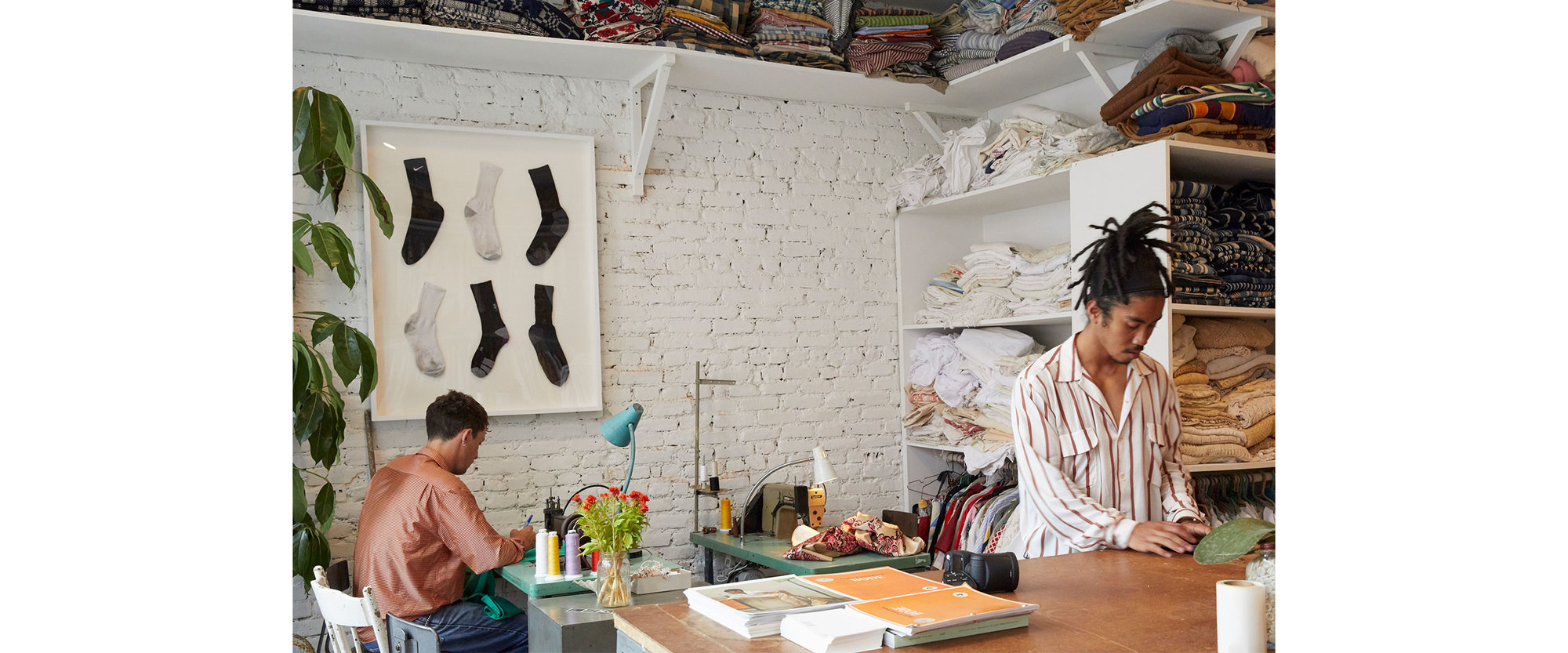How the Familiar Just Got Fresh:
Getting to Know Emily Bode, the Coolest Woman in Menswear
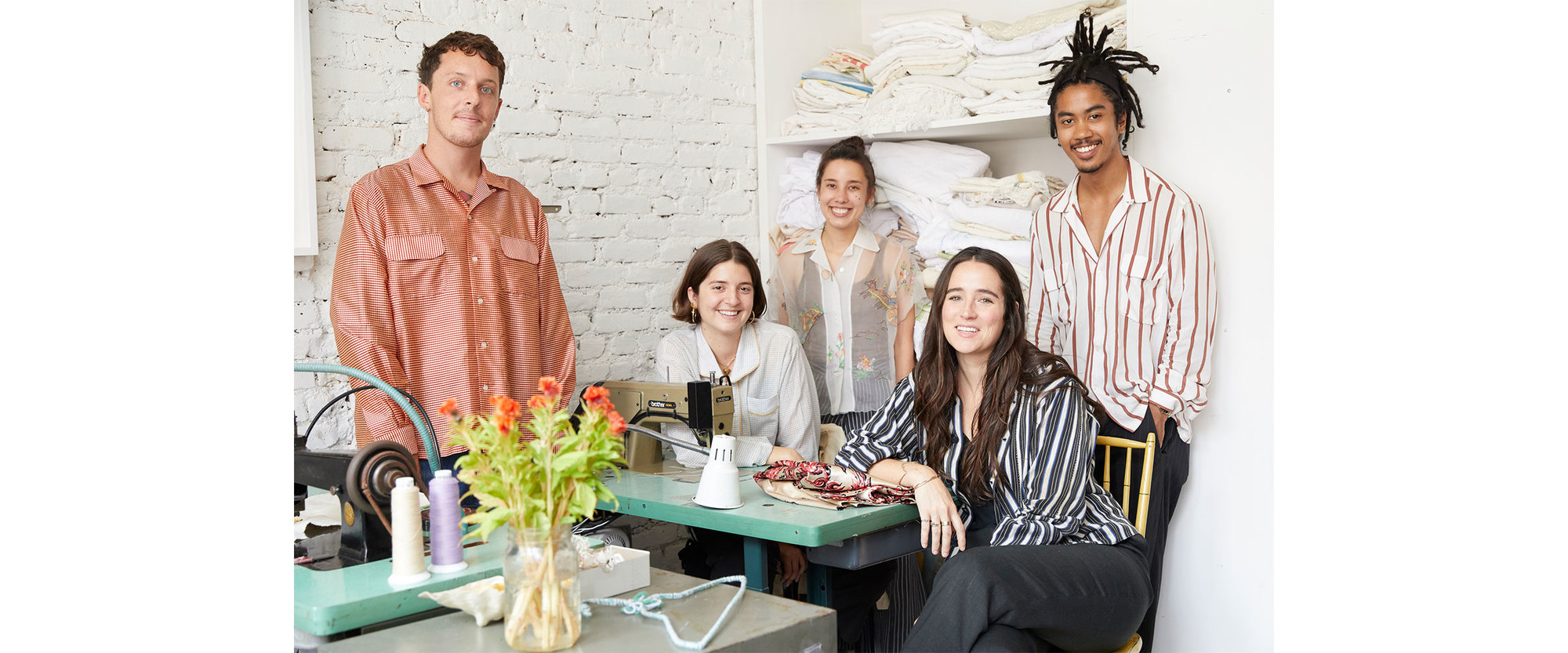
In two short years, Emily Bode has created the most talked about menswear brand in New York, one whose synthesis of vintage, deadstock fabrics, sensible-yet-progressive silhouettes, intricate embroidery and dash of romanticism is the freshest thing we’ve seen in a long time. And as someone who grew up immersed in the business of vintage, she’s been able to infuse that same narrative quality into something cool and new. On the heels of her CFDA/Vogue Fashion Fund nomination, Josh Peskowitz sits down with Emily to talk about the catalyst for her brand, her design philosophy and why New York will always be home.
